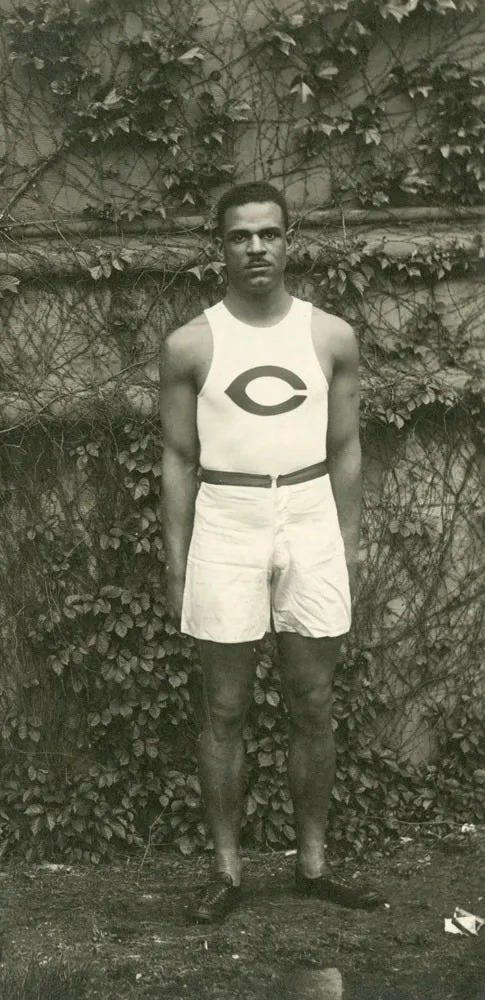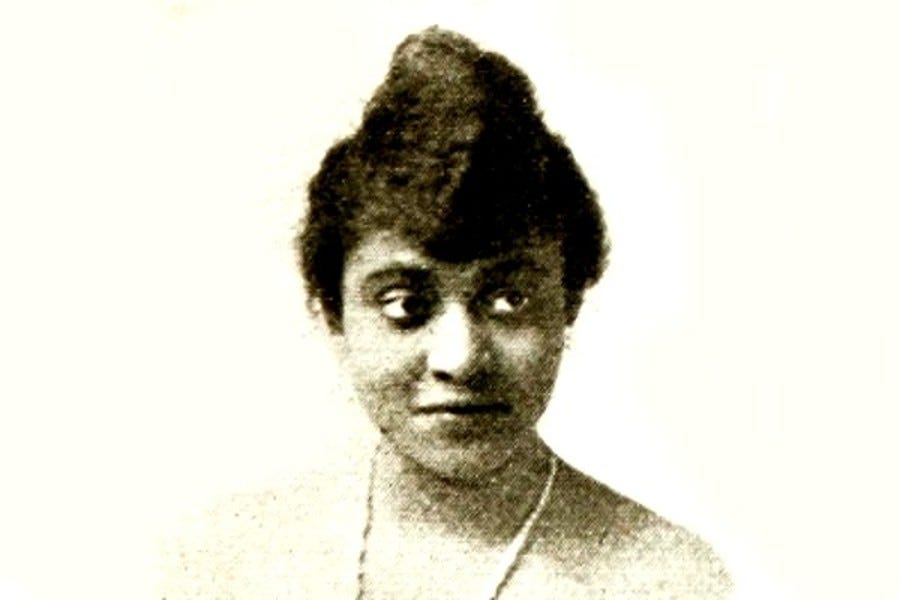I wrote this up in an earlier blog at a different location, but there are more of you now, reading this, and I found a bit more.
When I was researching Amos Alonzo Stagg and Stagg Field, I realized that, while Stagg is famous for football, he was a huge presence for track and field too, especially promoting the Olympics movement. He also respected talent. Henry Binga Dismond (1891-1956) was one of his track stars in 1915-1917, a Black man competing at the highest level of the sport at a time when that was extraordinarily difficult.

There isn’t much about him that I’ve found yet. Luckily there is a biographical article in the Journal of the National Medical Association. Dismond, who used Binga rather than Henry, probably to honor his uncle, was born in Virginia. His father was Samuel H. Dismond, a doctor. His parents both died when Binga was five. He was raised by his grandparents. Binga Dismond graduated with a B.A. from Howard University in 1912. His mother’s brother, Jesse Binga was at that time a banker in Chicago. Well, not just any banker. Here’s the opening paragraph at Wikipedia:
Jesse Binga (April 10, 1865 – June 13, 1950) was a prominent American businessman who founded the first privately owned African-American bank in Chicago.[1] Binga recalled coming to Chicago in the 1890s with $10 in his pocket. By the 1920s he was a bank president and major real estate owner. Unwilling to conform to de facto, private real-estate segregation, white real estate interests sometimes opposed him violently.[2] After his bank failed in the Great Depression, Binga was eventually charged with embezzlement, a controversial prosecution in the African American community. Protests and public petitions helped lead to his early release. He was granted a full pardon in 1941.
With Jesse’s encouragement, Henry enrolled in the University of Chicago, in the medical program, earning a B.S. in 1917.
All three years he was at the university, he was on the track team. He set the world record in the 440-yard dash in 1916. He was set to compete in the Olympics in Berlin 1916, but those were cancelled because of World War I. Dismond was Big Ten champ in the quarter mile sprint for all three years, setting a record that lasted for 23 years. As photos in the University of Chicago archive testify, he was part of championship relay teams all three years. The 1915 half-mile relay team set a world record. The 1917 relay teams set conference records. There were enough Black students at the University of Chicago at the time that there was a chapter of Alpha Phi Alpha fraternity, which he joined.
One of the things that struck me about the photos is that by 1917, Dismond is in the center of all the photos. I hope that signified something positive in Dismond’s experience.

He met his first wife at the University of Chicago. Gerri Major herself is worth reading about. Here’s her biography: https://www.harlemworldmagazine.com/from-the-harlem-renaissance-to-amsterdam-news-to-communism-the-legendary-gerri-major-1894-1984/
In 1917, Henry Dismond enlisted with the famous 370th Infantry, the 8th Division, the all-black Chicago unit, as a second lieutenant. He fought in France and was honored for his courageous action under heavy gunfire. He was promoted to first lieutenant. An important point about the 8th was that the officers were all Black.

He came back to Chicago to get his M.D. from Rush and to intern at Provident Hospital, a Black hospital. There he invented the Radex Steam Infuser to treat respiratory disease, which earned him a mention in a number of medical articles. In 1924, he moved to Harlem, where he specialized in the cutting edge of rehabilitative medicine, including x-rays, physiotherapy, and electrotherapy, especially for workmen injured on the job.
He was fascinated by Haitian culture and tried to spread an understanding of Haitian history and culture through the Society of the American Friends of Haiti. When Haiti experienced a violent confrontation with the Dominican Republic, he shipped medical supplies and support, especially for the orphans. The Haitian government awarded him the title “Chevalier of the National Order of Honor.”
His love of Haiti appeared in his book of poetry and musings. Perhaps some of the inspiration was because he was apparently friends with and the doctor for Langston Hughes. There’s probably a reason his poetry wasn’t included in Harlem Renaissance anthologies, but it’s interesting. For all his success, he still lived in Jim Crow America.
Status Quo
by Binga Dismond
Let Bourbons fight for status quo
And battle to maintain jim crow
A mere short span——they can decide
With whom we eat; with whom we ride;
With whom we pass the hours by;
With whom we march; with whom we die.
But they stay not time's endless rust
When they and we will end in dust,
And all in final chemistry
Become as one immutably
And shall remain a status quo——
Without a vestige of jim crow.
His obituary said he was a bon vivant, which must have been something in Harlem in its heyday. In addition to Alpha Phi Alpha, he was a member of the Elks (he’d been Exalted Ruler), the Masons, Knights of Pythias, Buffaloes, Foresters and Mechanics in addition to the NAACP and the Urban League.







Perfect story for African American History Month! I am especially interested that the UofC had, at that relatively early date, enough black students for a black fraternity. Great report!
Very interesting! Thank you for sharing